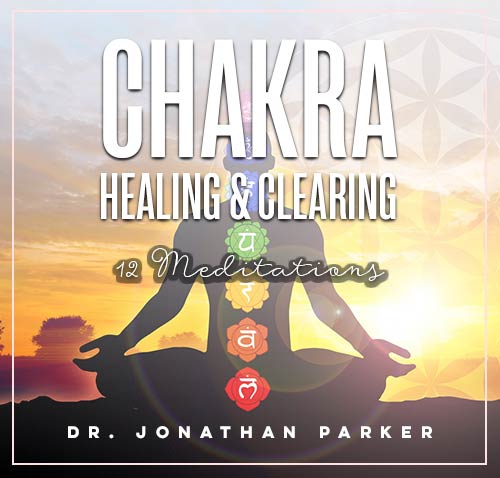How to Identify Authentic Chakra Stones and Crystals

Looking for more amazing products? Check out our online store and explore our collection here! Happy shopping!
Before diving in, please note: This post is for informational purposes only. If you’d like to know more about how we approach topics, feel free to check out our friendly Disclaimer Page.
Hey there, amazing readers! 
We’re committed to delivering quality posts, and your support (even just sticking around despite the ads) means everything to us. So, bear with us, and thanks for helping us keep the good vibes rolling. Now, on to the fun stuff!
TRANSLATE BUTTON AT THE END OF THE ARTICLE
Identifying authentic chakra stones and crystals is crucial for ensuring that you are using genuine and effective tools in your healing practices.
With the increasing popularity of chakra healing, the market is flooded with stones and crystals, some of which may be artificially enhanced or outright fakes.
Here’s a comprehensive guide to help you identify authentic chakra stones and crystals.
1. Understand the Basics of Chakra Stones and Crystals
Chakra stones and crystals are believed to possess unique energies that correspond to specific chakras in the body.
Each stone has particular properties that make it suitable for balancing and healing a specific chakra.
Here’s a quick overview:
Root Chakra (Muladhara): Garnet, Red Jasper, Hematite
Sacral Chakra (Svadhisthana): Carnelian, Orange Calcite, Moonstone
Solar Plexus Chakra (Manipura): Citrine, Tiger’s Eye, Amber
Heart Chakra (Anahata): Rose Quartz, Green Aventurine, Malachite
Throat Chakra (Vishuddha): Aquamarine, Lapis Lazuli, Blue Lace Agate
Third Eye Chakra (Ajna): Amethyst, Sodalite, Lapis Lazuli
Crown Chakra (Sahasrara): Clear Quartz, Selenite, Amethyst
2. Examine the Color and Clarity
The color and clarity of a chakra stone or crystal can tell you a lot about its authenticity.
Natural stones typically have vibrant colors, but they are not overly bright or artificial-looking.
Natural Variations: Authentic stones often have slight variations in color, as well as natural inclusions (small imperfections inside the stone).
Avoid Perfection: Stones that are too perfect, with uniform color and no inclusions, might be synthetic or treated.
Check the Hue: The color should be consistent with what is known for that particular stone.
For example, Amethyst should be a rich purple, while Rose Quartz should be a soft pink.
3. Feel the Weight and Temperature
Authentic chakra stones and crystals have a certain weight and temperature that can be felt when held.
Natural stones are denser and cooler to the touch compared to their fake counterparts.
Weight Test: Real stones will feel heavier than plastic or glass imitations.
Temperature Test: Genuine stones feel cool when first picked up, and they warm slowly as they absorb the heat from your hand.
Fake stones, particularly those made from plastic, tend to feel warmer from the start.
4. Inspect for Natural Inclusions
Inclusions are tiny imperfections or internal fractures that occur naturally in stones.
These are not flaws but rather a sign that the stone is genuine.
Inclusions are Normal: Real stones often have tiny inclusions or imperfections.
These could be small cracks, cloudy areas, or internal lines.
Look for Unique Patterns: Natural stones may have swirls, spots, or other unique patterns.
If the stone looks too uniform or flawless, it could be fake.
5. Conduct a Scratch Test
The hardness of a stone can help determine its authenticity.
Most genuine crystals are quite hard and resistant to scratching.
Mohs Hardness Scale: Familiarize yourself with the Mohs hardness scale.
For example, Quartz (including Amethyst and Citrine) has a hardness of 7, meaning it should not scratch easily.
Test with a Steel Blade: Carefully scratch the surface of the stone with a steel blade or a piece of glass.
Authentic stones should not scratch easily, whereas fakes made of plastic or softer materials will show a scratch.
6. Check for Enhancements
Some stones are treated or enhanced to improve their color or clarity.
While this doesn’t necessarily make them fake, it’s important to know if a stone has been altered.
Dye Test: Stones like Quartz and Howlite are often dyed to mimic other stones.
Look for unnaturally bright or vivid colors, which could indicate dyeing.
Heat Treatment: Some stones, like Citrine, are often heat-treated Amethysts.
If a Citrine is too dark or unevenly colored, it might be heat-treated.
7. Research the Seller
Where you buy your stones can significantly impact the quality and authenticity of the stones you receive.
Reputable sellers are more likely to provide genuine products.
Read Reviews: Look for sellers with positive reviews and a good reputation for selling authentic stones.
Ask Questions: Don’t hesitate to ask the seller about the origin of the stones, whether they have been treated, and if they provide certificates of authenticity.
Check Return Policies: A reputable seller will offer a return policy, which can be a sign of confidence in their products.
8. Test with Light
Some stones exhibit particular behaviors when exposed to light, which can help determine their authenticity.
Check for Transparency: Hold the stone up to light and observe how the light passes through it.
Genuine stones will often show some level of transparency or unique patterns when backlit.
Look for Reflections: Some stones, like Labradorite or Moonstone, have a special optical effect known as labradorescence or adularescence.
These stones should show a play of colors or a shimmering effect when moved under light.
9. Consider the Price
If a deal seems too good to be true, it probably is.
High-quality chakra stones and crystals come with a price tag that reflects their rarity and authenticity.
Avoid Cheap Deals: Extremely low prices can be a red flag.
Genuine stones, especially those that are rare or large, will not be sold at rock-bottom prices.
Compare Prices: Research the average price of the stones you are interested in to get a sense of what you should expect to pay.
10. Use Your Intuition
Finally, trust your intuition when choosing chakra stones and crystals.
You may feel drawn to a particular stone, and this can be an indicator that it’s the right one for you.
Hold the Stone: Spend some time holding the stone and see how it feels.
Genuine stones often have a noticeable energy or vibration.
Listen to Your Inner Voice: If something feels off about a stone or a seller, it’s okay to walk away and look for a more trustworthy option.
Conclusion
Identifying authentic chakra stones and crystals involves a combination of knowledge, observation, and intuition.
By understanding the characteristics of genuine stones, such as color, clarity, weight, and natural inclusions, you can confidently select stones that will be effective in your healing practices.
Always buy from reputable sellers, and don’t hesitate to ask questions or trust your instincts.
With the right approach, you can build a collection of authentic chakra stones that enhance your well-being and spiritual journey.

The Enlightenment Journey is a remarkable collection of writings authored by a distinguished group of experts in the fields of spirituality, new age, and esoteric knowledge.
This anthology features a diverse assembly of well-experienced authors who bring their profound insights and credible perspectives to the forefront.
Each contributor possesses a wealth of knowledge and wisdom, making them authorities in their respective domains.
Together, they offer readers a transformative journey into the realms of spiritual growth, self-discovery, and esoteric enlightenment.
The Enlightenment Journey is a testament to the collective expertise of these luminaries, providing readers with a rich tapestry of ideas and information to illuminate their spiritual path.
Our Diverse Expertise
While our primary focus is on spirituality and esotericism, we are equally passionate about exploring a wide range of other topics and niches 

To ensure we provide the most accurate and valuable insights, we collaborate with trusted experts in their respective domains 
Our blog originally focused on spirituality and metaphysics, but we’ve since expanded to cover a wide range of niches. Don’t worry—we continue to publish a lot of articles on spirituality! Frequently visit our blog to explore our diverse content and stay tuned for more insightful reads.
Hey there, amazing reader! 
Check out our store here and take a peek at some of our featured products below! Thanks for being awesome!












